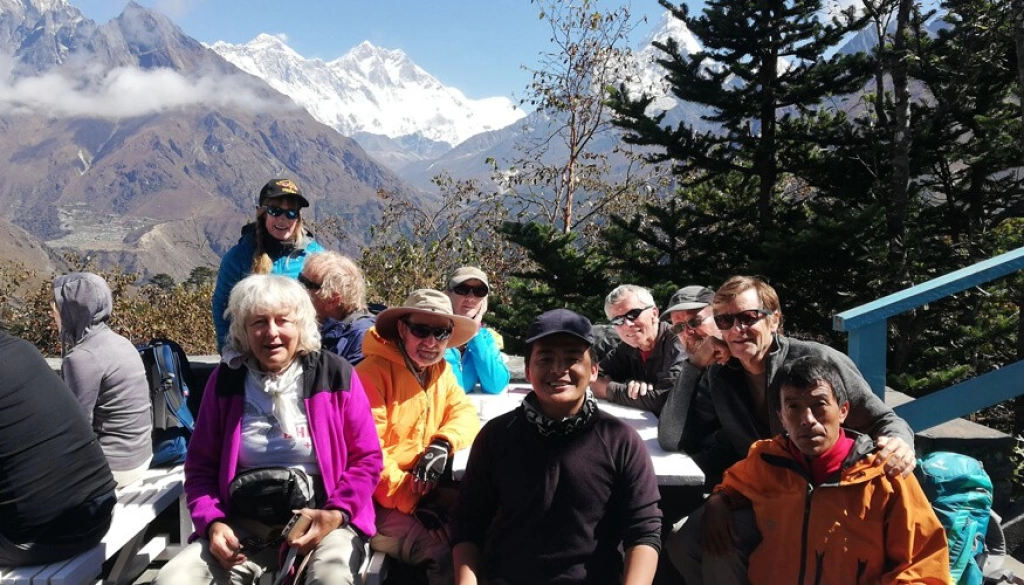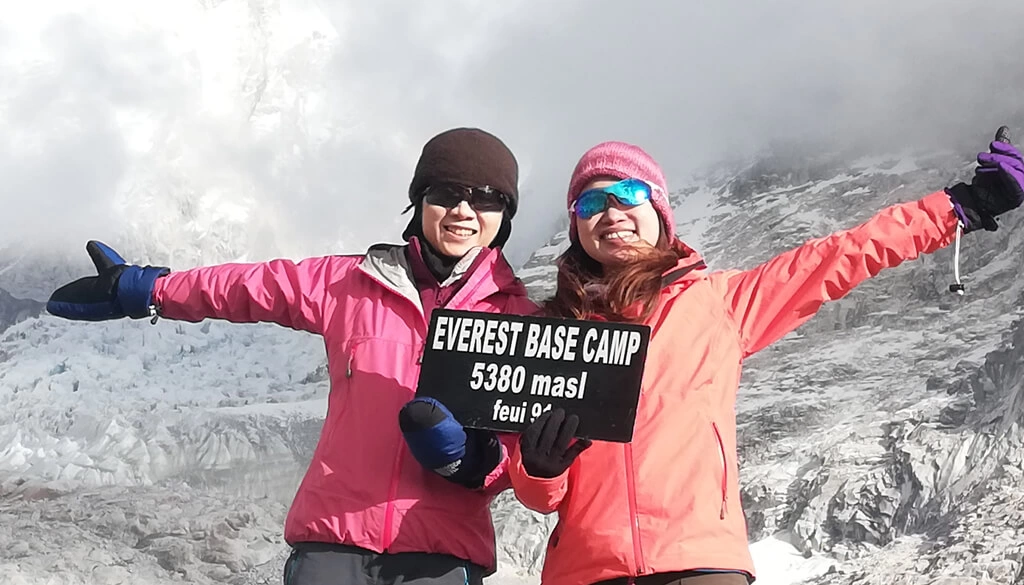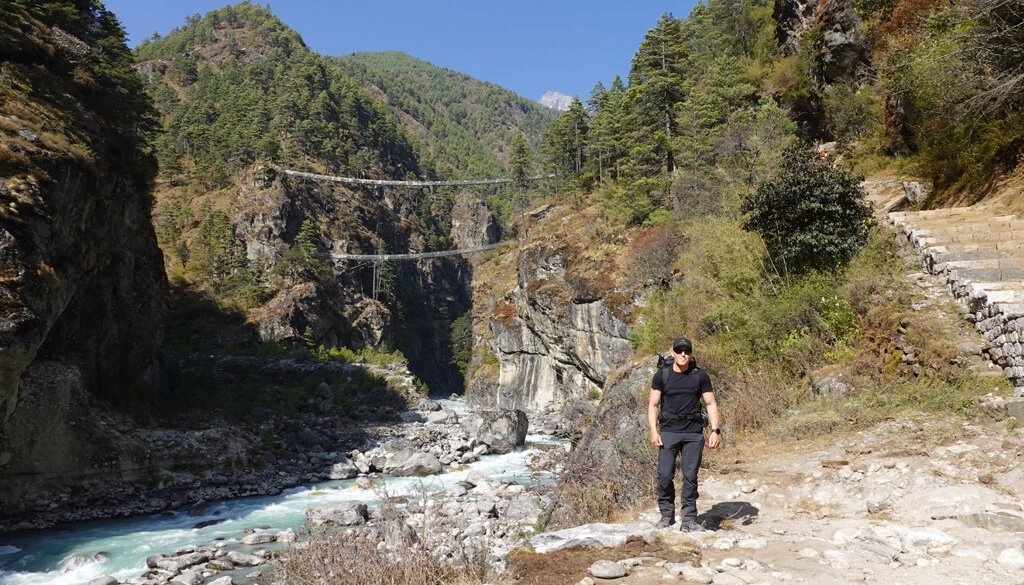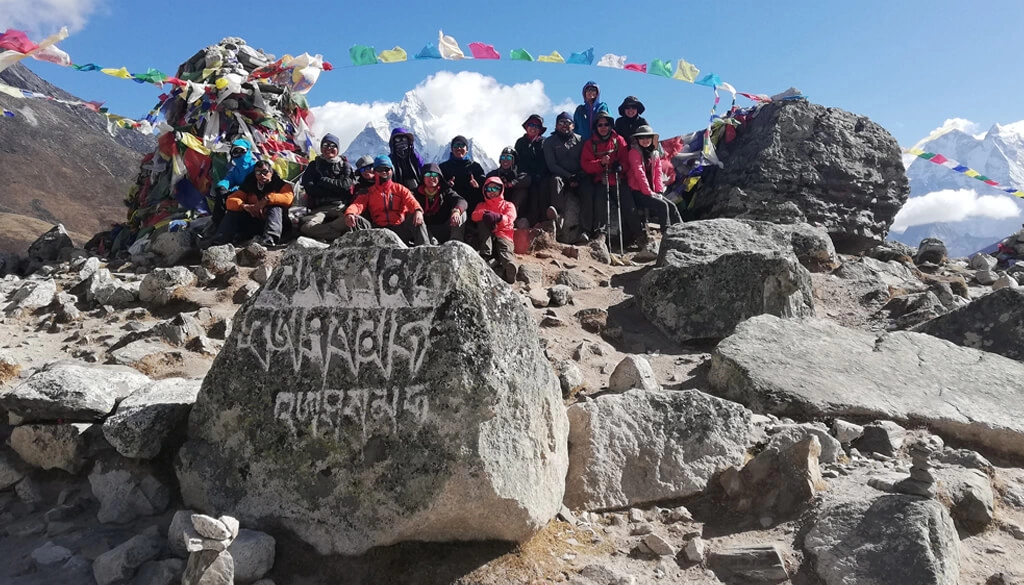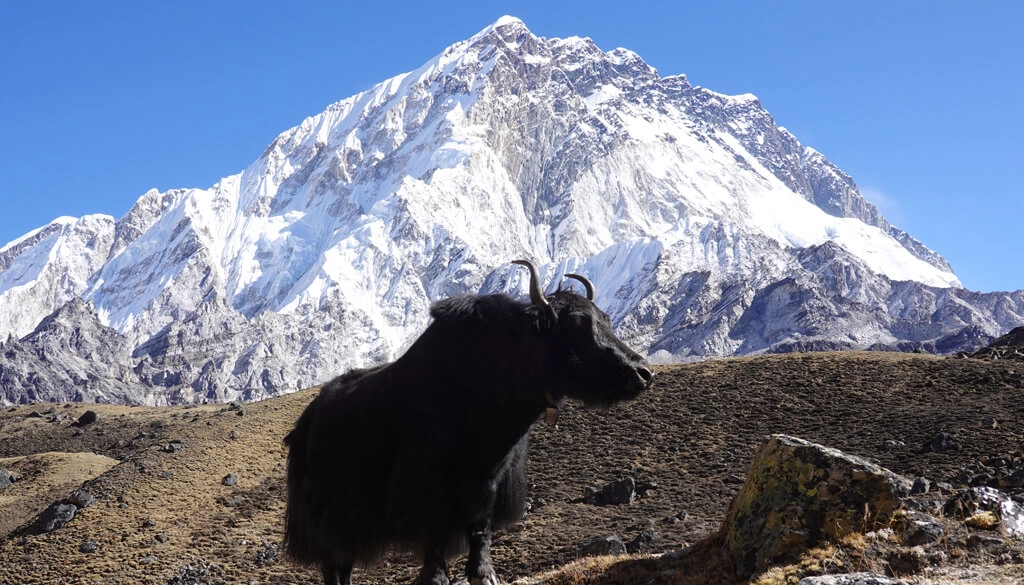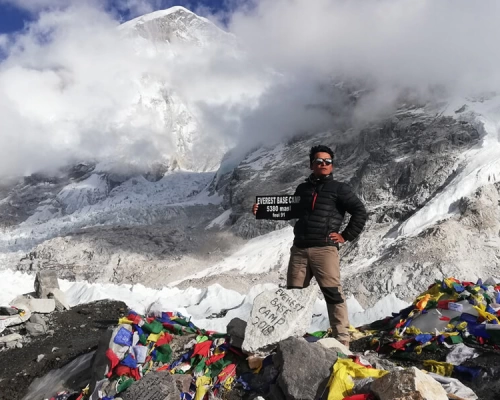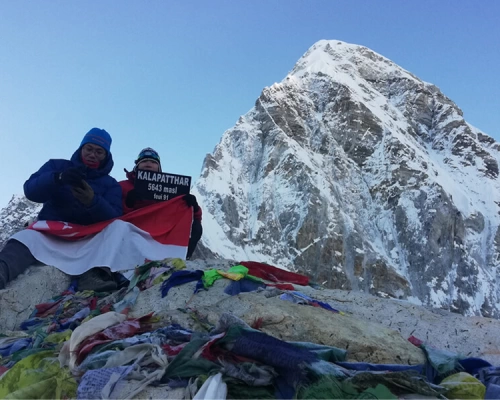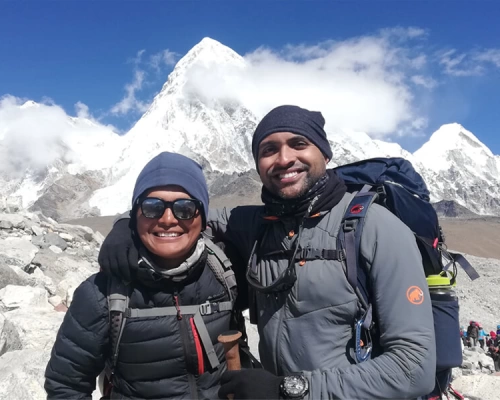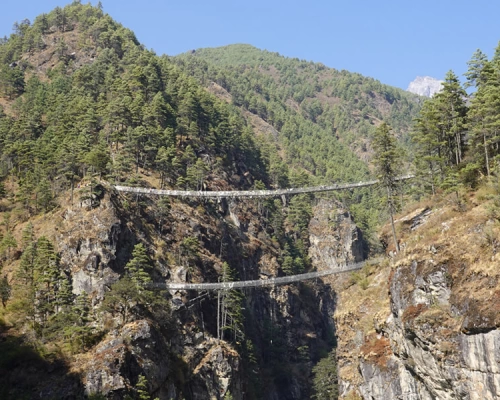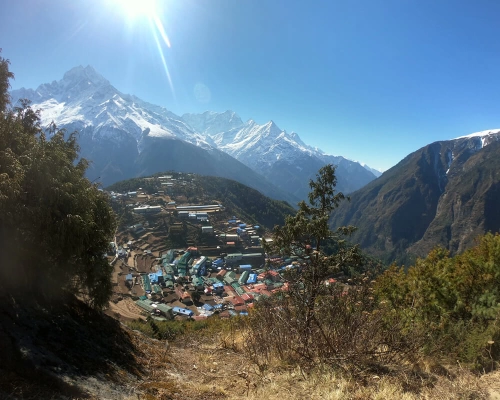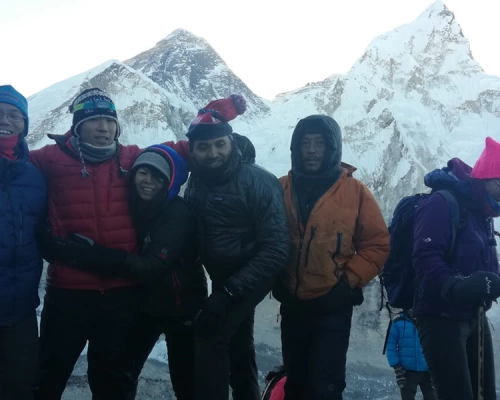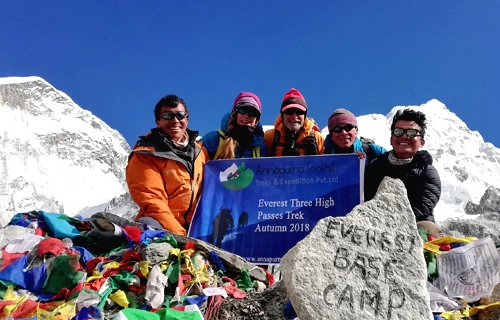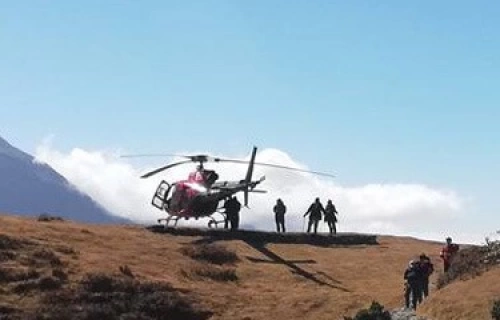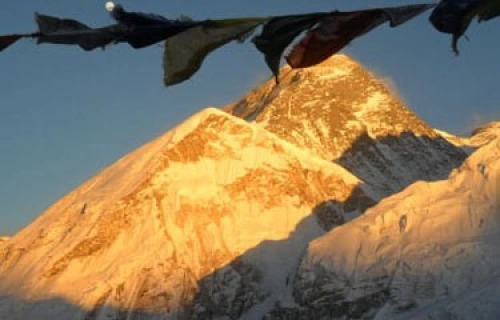About Rapid Everest Base Camp Trekking
Rapid Everest Base Camp Trekking is definitely one of the life’s wonders that you wish to do at least once in your life. The trek to the foothills of world’s highest mountain is a magical experience in the Himalaya of Nepal. The sole idea of reaching the base camp of Mount Everest is enough to attract travelers and enthusiast hikers across the world to visit this destination. What comes in between is the journey through the Sherpa villages, monasteries, and the beautiful mountains accompanying you throughout the journey including Mount Everest (8848.86).
The Trip is designed to complete the whole trek within less than 2 weeks. If you have tight time schedule, or already been to Nepal, want to escape the day tours in Kathmandu and would like to choose your own accommodation in Kathmandu, and start the trek immediately then Rapid Everest Base Camp Trekking 12 Days is the best suited trip for you.
Our Rapid Everest Base Camp Trek begins with a scenic flight from Kathmandu to Lukla. Early in the morning, you and your guide will fly to Lukla from Kathmandu. Upon reaching Lukla, we will meet our supporting staffs (porters) and from there, our hike to Everest Base Camp begins. We start our hike with a gentle walk to the village of Phakding at 2610 meters. Next day starts with the hike to Namche Bazzar, passing through sherpa villages such as Monjo, Jorsale etc. There will be two acclimatization days, one at Namche and another at Dingboche. The trail follows the village of Tengboche, Dingboche, Lobuche, Gorakshep before reaching the amazing Everest Base Camp. The hike and view from Kala Patthar at an elevation of 5545 m is one of the major highlights of this trek.
Not just the highest mountain views, this adventurous trip offers a combination of nature, changing landscapes, culture, insight into Sherpa people and communities with the best as well as well maintained trekking trails in the Himalaya of Nepal. Our trek officially concludes at Lukla where the hike to the foothills of worlds' highest mountain, Rapid Everest base camp Trek started. This last evening at Lukla is the perfect opportunity for a farewell party with your sherpa Guides and Porters and a good chance to sample some chhyang, try Nepali and Sherpa dance and look back on the memorable trekking experiences and marvel at all the incredible things you have encountered throughout your jorney in the Himalayas
Best Seasons for Rapid Everest Base Camp Trekking:
The best season for the Everest region Trek is from September to November and from March to May. These months are known for sunny and warm weather and outstanding views. The summer months from June to August are also beautiful, but the trek can be affected by the monsoon rains.
Tea House/Lodge Trek:
Accommodation is included in the cost of your package. Annapurna Foothills Treks takes great care to arrange the most comfortable accommodation possible throughout your stay. During the trek, the nights will be spent in clean and comfortable tea houses with plenty of character and good food. The simple rooms usually have two narrow beds. The family run lodges are a great place to get to know the Nepalese people. In Nepalese culture, a guest is equal to god, and surely this has become even more of a reality since the tourism industry has improved their meager opportunities to earn. You will be made very welcome!
Meals:
Three meals a day are included during your Jiri to Everest Base Camp Trek. The menu will be fairly simple, but freshly cooked and hygienic. You can enjoy typical Nepali, Tibetan and Sherpa food, as well as all types of international cuisine. Dinners and breakfasts will be provided in the teahouse/lodge where you spend the night. Lunches will be eaten in a teashop on the way to the destination of the day.
Drinking Water on Everest Base Camp Trekking:
We suggest that you drink boiled water or bring chlorine tablets to purify the normal water available in the guest houses along the way. There is a small fee charged for the boiled water. Although mineral water is available in most places, there is no provision to dispose of the plastic bottles, so we encourage the guests to do what they can to protect the environment.
Fitness/Health:
If you have a reasonable level of fitness, this trek should be more than manageable. The altitude becomes more noticeable the higher we go, so we walk at a slow pace and take plenty of breaks to rest and acclimatize.
Local Customs You Should Know About on the Rapid Everest Base Camp Trekking:
Ethnic groups of the hilly and mountain regions are predominantly Buddhist, and you will see many mani stones, stupas, gumbas and prayer wheels. It is respectful to pass these objects with your right side nearest to the object, in a clockwise direction. Avoid sitting or standing on mani stones, stupas, tables used for worship or anything that is a religious symbol, as that is considered disrespectful.
Travel Insurance for Rapid Everest Base Camp Trekking:
It is strongly recommended to be sufficiently protected when you go into remote areas. You need specialized travel insurance that covers emergency evacuation, injury, lost baggage, liability and medical treatment. Make sure the insurance covers all the activities that you will be undertaking during your stay in Nepal. Annapurna Foothills Treks and Expeditions Pvt. Ltd. can organize the appropriate medical response based on your policy.
Flight Delay/Cancellation:
Domestic flights to mountain regions can be delayed or cancelled due to bad weather. Be aware that you may have long waits in the airports. From our side, if a flight is cancelled we make sure you get on the next possible flight.
If flight cancellations at the start of your trek delay your trek to the point of disturbing your onward travel schedule, you will be free to choose an alternative trip; there are many excellent options in the Annapurna, Langtang and other regions. If you do not wish to take an alternative trek, and wait in Kathmandu for the flight to Lukla, your original trek may be shortened due to the days lost in waiting. In such case, the client will be responsible to bear all additional expenses including food and accommodation.
If the client wishes to make an alternative arrangement such as a helicopter flight, Annapurna Foothills Treks and Expeditions will assist in making the booking, but will not cover the cost of the alternative arrangement. The refunded money of the unused flight ticket would be credited to the concerned client, however.
There will be no refund for the days of the trek that are missed. You will not be entitled to any refund for services in the package (ie hotel, transport, flight) that you did not use due to the cancellation.
It is advisable to allow one or two extra days at the end of your trip to allow for flight delay/cancellation.
In an emergency, or upon request by our clients, a heli-rescue can be organized. The helicopter costs around USD 3100, and can lift 4-5 persons per flight.
If flight cancellations at the end of your trek delay your return to Kathmandu, you will be responsible for all your expenses during the wait in Lukla.
